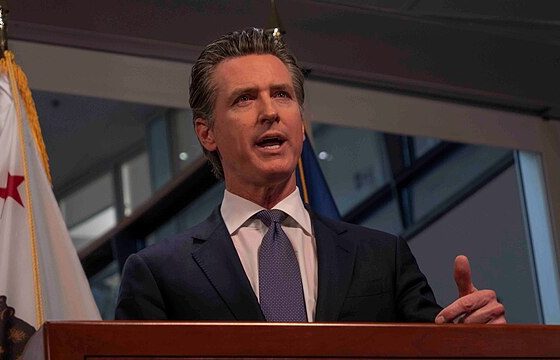When President Barack Obama named retiring Republican Rep. Ray LaHood of Illinois to serve as his administration’s secretary of Transportation, LaHood brought with him a vision for changing the way Americans moved from one place to another.
It would start with empowering the government to monitor how many miles they drove.
“We should look at the vehicular miles program where people are actually clocked on the number of miles that they traveled,” LaHood told the Associated Press in a Feb. 19, 2009 interview.
“What I see this administration doing is this—thinking outside the box on how we fund our infrastructure in America,” he said.
Even the Obama Administration, however, did not fully embrace what LaHood was suggesting,
At the White House press briefing the next day, a reporter from the Associated Press asked White House Press Secretary Robert Gibbs about LaHood’s idea.
“Can I ask about gas taxes versus miles driven taxes,” the reporter asked Gibbs.
“Sure,” Gibbs said.
“Secretary LaHood told AP in an interview that he thinks we should look at this, going to miles driven taxes,” the reporter said. “But someone—a spokesman over at the department said, no, that is not and will not be administration policy. Which is it? And has the president weighed in on this?”
“I don’t believe the president has,” said Gibbs. “I can weigh in on it and say that it is not and will not be the policy of the Obama administration.”
The Obama administration did not pursue a vehicle-miles-traveled tax, but Secretary LaHood did advance a plan to reduce American driving.
On June 16, 2009, the Senate Committee on Banking, Housing and Urban Affairs held a hearing on “Greener Communities, Greater Opportunities: New Ideas For Sustainable Development and Economic Growth.”
LaHood testified at this hearing on his vision for “more livable communities” and “transit-oriented development.”
“Our goal is to build livable communities, where safe, convenient and affordable transportation is available to all people, regardless of what mode they use,” he said.
The first principle of this vision was: “Develop safe, reliable and economical transportation choices to decrease household transportation costs, reduce our nation’s dependence on foreign oil, improve air quality, reduce greenhouse gas emissions and promote public health.”
“Transit-oriented, mixed-use development has the potential to provide efficient and convenient options for employers, developers, young professionals and families in many large and small cities around the United States,” LaHood said.
“Transit-oriented development,” he said, “also has the potential to contribute significantly to the revitalization of downtown districts, foster workable neighborhoods and offer an alternative to urban and suburban sprawl and automobile focused commuting.”
On April 14, 2009, the Heritage Foundation published a report by Ronald Utt, which this writer cited in his 2010 book “Control Freaks.” Utt’s report was entitled, “President Obama’s New Plan to Decide Where Americans Live and How They Travel.”
“To save Americans from these alleged higher costs of living,” Utt wrote, “the Smart Growth and New Urbanist movements want Americans to move into higher-density developments—such as townhouses and high-rise apartment buildings—which, the anti-suburbanists contend, can be better served by public transportation (hence the commitment to ‘transportation choice,’ a process whereby commuters are bribed or coerced into an inconvenient mode of transportation that most would not choose on their own)—thereby freeing the hapless American people from relying on their automobiles.”
On May 21, 2009, LaHood gave a presentation at the National Press Club. As this writer also noted in “Control Freaks,” the moderator at this event asked LaHood about his “livability” plan.
“Some in the highway supporters and motorists groups have been concerned about your livability initiative,” the moderator asked. “Is this an effort to make driving more torturous and to coerce people out of their cars?”
“It is a way to coerce people out of their cars, yeah,” said LaHood.
“Now, look it, every community is not going to be a ‘livable community,’” he said, “but we have to create opportunities for people that do want to use a bicycle or want to walk to get on a streetcar or want to ride a light rail.”
LaHood did not succeed in coercing people out of their cars.
Twelve years later, President Joe Biden’s Transportation Secretary Pete Buttigieg testified in the House Transportation and Infrastructure Committee. He was asked if he would work to reduce the miles Americans drive.
“Will you, Mr. Secretary, commit to working to ensure that equity is a critical part of the sustainability conversation and help us advance policies that reduce vehicle miles traveled rather than just trying to replace gas cars with electric vehicles?” asked Democratic Rep. Chuy Garcia of Illinois.
“Yes,” said Buttigieg. “Part of the solution is to make sure that our cars are cleaner, but part of the solution is to make sure that people have alternatives in order to get around and we don’t assume in our transportation decisions that everybody would be able to or would want to be behind the wheel of a car.”
So, three years into the Biden Administration, who is winning this battle? Are Americans being pushed out of their cars?
When Ray LaHood was Transportation secretary in the month of August 2009, according to estimates published by the Federal Highway Administration, Americans drove 260.609 billion vehicle-miles. In the 12-month period that ended that August, they drove 2,959,390,000,000 vehicle-miles.
In August of this year, when Pete Buttigieg was Transportation secretary, they drove 288.396 billion vehicles miles. In the 12-month period that ended this August, they drove 3,219,269,000,000 vehicle miles.
In the twelve-month period that ended in August 2019, the year before the COVID-19 pandemic, Americans drove 3,262,068,000,000 vehicle-miles. That dropped to 2,979,106,000,000 in the 12 months that ended in August 2020, during the pandemic.
But Americans are now back at the wheel—where they freely drive where they want and when they want.
Terence P. Jeffrey on November 16, 2023












